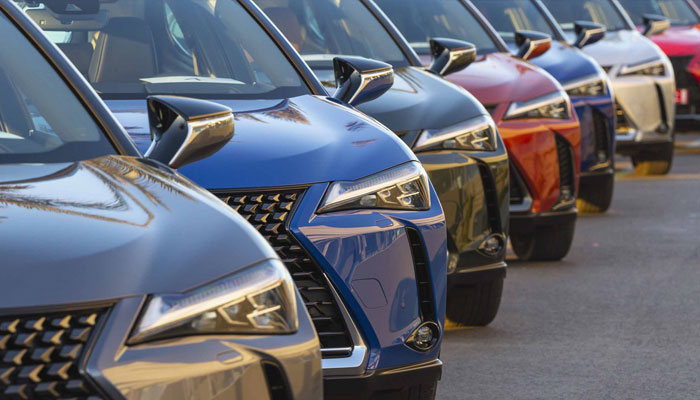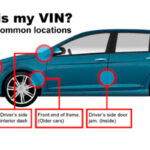In the world of automobiles, car color is a reflection of more than just personal taste. It tells a story about the driver, conveying personality, lifestyle, and even practicality. Whether it’s the classic appeal of white or the bold statement of red, each car color has its unique charm. But how do you choose the right one? This article explores the most popular car colors, particularly in the US, and the benefits of both light and dark-colored vehicles to help you make an informed choice.
Most Popular Car Colors
What is the Most Popular Car Color?
When it comes to popularity, some car colors have stood the test of time, becoming the go-to choices for many drivers. As of 2024, white remains the most popular car color worldwide. Its clean, modern look is favored by many, symbolizing simplicity and purity. White also has practical benefits, such as better heat reflection, making it a preferred choice in warmer climates.
Following white, gray, and black are other top contenders. Gray offers a neutral, sophisticated appearance, while black exudes elegance and luxury. These colors have a timeless appeal and are often seen on both luxury and everyday vehicles.
Blue and silver also rank high in popularity. Blue is associated with stability and dependability, making it a popular choice for those who value practicality. Silver, with its sleek, tech-forward appearance, is particularly appreciated for its ability to hide dirt and scratches.
Red, on the other hand, is for the bold and confident. It’s a color that stands out on the road, symbolizing energy and passion. Other colors like green, yellow, and orange are less common but still have their niche audiences who appreciate their unique qualities.
Popular Car Colors in the US
In the United States, car color trends closely follow global preferences, with white leading the pack. A study by iSeeCars revealed that white cars account for about 24% of vehicles on the road, making it the most popular choice. This is followed closely by black (23%) and gray (15.5%).
The trend continues with silver at 14.5%, red at 10.3%, and blue at 9%. These colors dominate the market, largely because they appeal to a wide range of drivers and are often associated with higher resale values.
Less common colors in the US include brown, green, beige, orange, and even rarer shades like purple and pink. While these colors may not be as popular, they offer a way for drivers to express individuality and stand out from the crowd.
Benefits of Light-Colored Cars
Light-colored cars, such as white, silver, and light gray, come with several advantages, particularly in terms of practicality.
Cooler Interiors: One of the most significant benefits of light-colored cars is their ability to reflect sunlight. This helps keep the car’s interior cooler, reducing the need for air conditioning and improving fuel efficiency. In regions with hot climates, this can make a noticeable difference in comfort and cost.
Visibility and Safety: Light-colored vehicles are often easier to spot on the road, especially in low-light conditions. While there’s no conclusive evidence that light-colored cars are safer, many drivers believe that brighter colors make them more noticeable, potentially reducing the risk of accidents.
Maintenance: Light colors are also easier to maintain. They tend to show less dirt, scratches, and water spots compared to darker colors. This means that your car can look cleaner for longer periods, requiring less frequent washing.
Benefits of Dark-Colored Cars
While light-colored cars have their perks, dark-colored vehicles like black, dark gray, and deep blue have their own set of advantages.
Elegance and Sophistication: Dark colors, particularly black, are often associated with luxury and elegance. A well-maintained black car has a timeless appeal that commands attention on the road. The glossy finish of a black vehicle, when clean, can make it stand out as a symbol of refinement.
Resale Value: Dark-colored cars, especially black, tend to hold their value well. Their broad appeal means that they often have a strong resale market, making them a good investment for those considering future trade-in or sale.
Bold Statements: Dark colors also make a bold statement. Whether it’s a sleek black sedan or a deep blue SUV, these colors convey confidence and power, which can be particularly appealing to those looking to make an impression.
Choosing the Right Car Color for You
Selecting the perfect car color is a personal decision that goes beyond aesthetics. Here are some factors to consider when choosing the color of your next vehicle:
Personal Taste: Your car’s color should resonate with your personality and style. If you prefer to blend in, classic colors like white, gray, or black might be your best bet. If you enjoy standing out, consider bolder colors like red, yellow, or green.
Climate Considerations: The climate where you live should influence your choice. Light colors are better for hot climates as they reflect heat, while dark colors may be more suitable for cooler regions.
Maintenance: Consider how much effort you’re willing to put into maintaining your car’s appearance. Dark colors may require more frequent cleaning and are more likely to show scratches and imperfections. Light colors, on the other hand, are generally easier to keep looking clean.
Resale Value: If you plan to sell or trade-in your car in the future, consider the resale value of different colors. Neutral tones like white, black, and gray typically hold their value better than more unique colors.
Cost: Some car colors may come with a higher price tag, especially if they’re part of a premium package. Be sure to check if your chosen color will affect the overall cost of the vehicle.
Conclusion
In conclusion, there isn’t a one-size-fits-all answer when it comes to choosing the right car color. Whether you opt for a classic white, a sophisticated black, or a vibrant red, the most important thing is that the color aligns with your personality, lifestyle, and practical needs. After all, your car’s color is more than just a visual choice—it’s a reflection of who you are on the road.










